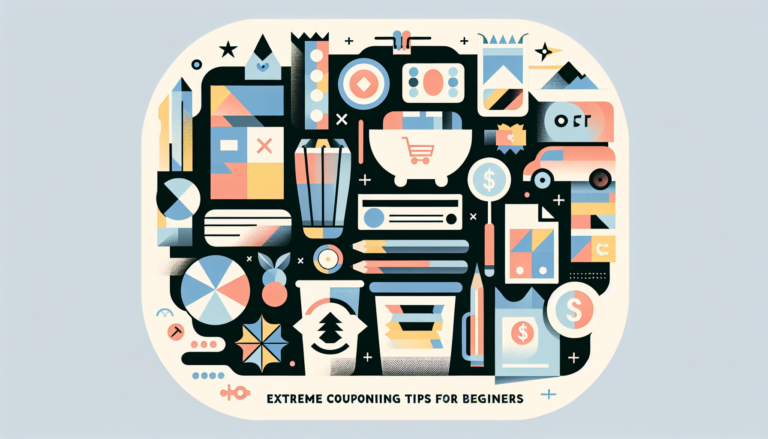Empower Your Wallet: The Ultimate Guide on Starting an Emergency Fund
Understanding the Need for Emergency Funds
Let’s face it, life’s full of surprises—some good, some not so much. Building a stash of cash for those unexpected bumps in the road isn’t just smart; it’s key to keeping your finances alive and kicking. Here’s why you need that rainy-day fund and what it can do for you when life’s curveballs come zooming in.
Importance of Emergency Savings
An emergency fund is like having a financial guardian angel. It’s your safety net for when your car decides to throw a fit, or that medical bill shows up at your door. Experts say to squirrel away enough dough to cover at least three to six months of those pesky monthly bills. That way, if things get a bit rough, you aren’t running to the bank or, worse, your credit card.
| Monthly Expenses | 3 Months Emergency Fund | 6 Months Emergency Fund |
|---|---|---|
| $2,000 | $6,000 | $12,000 |
| $4,000 | $12,000 | $24,000 |
| $6,000 | $18,000 | $36,000 |
Getting a grip on this means that when financial hiccups occur, you don’t need to panic. Without a backup, even a small crisis can knock your financial train off its tracks, sending you into the dreaded land of debt.
Financial Impact of Unexpected Expenses
Unplanned expenses are like the bad apple in the barrel. Without a cushion, dealing with them can leave your wallet wheezing. You might reach for that handy credit card—but beware. That can start a nasty cycle of debt. With a padded emergency fund, though, those problems shrink down to size, keeping you on a steady and strong financial path.
Living without an emergency fund? That’s going to push your stress levels through the roof. It’s not just about handling unexpected bills; it’s about walking through life with a little more pep in your step because you know you’ve got it covered.
Check out our saving money for emergencies guide for nifty tips to beef up your fund. Knowing you need that cash stash is just step one; actually building it can supercharge your financial health and peace of mind.
Setting Your Emergency Fund Goal
Having an emergency fund is like having a financial superhero in your corner. We’re diving into getting yours set up perfectly, so let’s sort out how big this heroic fund should be, and figure out how to tweak it so it fits your life just right!
Calculating the Ideal Emergency Fund Size
So, what do the money gurus say? They reckon socking away three to six months of your must-pay expenses is the way to go. Imagine this: you need $6,000 each month to keep the lights on and the wolf from the door. You’re looking at needing anywhere from $18,000 to $36,000 to have a truly comfy emergency fund (Experian).
Let’s break it down a bit with this handy dandy table:
| Monthly Expenses | Minimum Emergency Fund (3 months) | Maximum Emergency Fund (6 months) |
|---|---|---|
| $3,000 | $9,000 | $18,000 |
| $4,000 | $12,000 | $24,000 |
| $5,000 | $15,000 | $30,000 |
| $6,000 | $18,000 | $36,000 |
Someone once said, “Rome wasn’t built in a day,” and your fund doesn’t have to be, either (Get Rich Slowly). Little bits add up fast!
Adjusting Based on Lifestyle and Circumstances
Now, that three to six months idea? It’s more of a guideline than a rule. Here’s where your personal life plays a starring role in deciding just how fat that piggy bank needs to be.
-
Job Stability: If you’ve got a job as solid as a rock, maybe three months is where you’re comfy. If you’re a freelance whiz, consider aiming for six months.
-
Health Considerations: Got some health stuff in the mix? Better beef up that fund so your medical bills don’t bulldoze your bank account.
-
Lifestyle Choices: If you’ve got costly digs or kiddos to look after, you might need to add a few more bucks to your safety net just in case things go sideways.
For example, if you’re shelling out $5,000 monthly, your emergency stash should ideally sit somewhere between $15,000 and $30,000 for those ‘sudden-whoa’ moments (Vanguard).
Tweaking these savings goals to fit your life is like making your emergency fund a custom-tailored suit, and when life throws curveballs, it’ll catch ’em for you. For even more ways to give your savings a boost, check out our pieces on emergency fund savings tips and emergency fund vs savings account.
Strategies to Build Your Emergency Fund
Getting that emergency fund together isn’t as daunting as it seems. Grab a cup of coffee, sit back, and let’s explore some down-to-earth ways to tuck away those extra dollars for a rainy day or, you know, when the car suddenly decides to retire.
Building a Savings Routine
Kicking off the savings habit is the first big step. Begin with small, attainable milestones. Suppose Jane and John, whose monthly bills are around $5,000, decide to stash away $5,000. When they nail that, they can aim higher for the three to six months’ worth of expenses the money gurus highly recommend (Investopedia). It’s like climbing a hill—you start small, and before you know it, you’re king of the mountain.
Managing Your Money Smarter
Alright, it’s time to put on the detective hat and uncover areas where money might be slipping away unnoticed. Could cutting back on takeout or axing that gym membership you never use help you save? Slide those extra funds into your savings without feeling the pinch too much.
When tax refund season rolls around or you get an unexpected bonus, resist the splurge impulse. Channel some or all of that windfall into padding your emergency fund. Consistency matters—a little here, a little there, and suddenly you’ve built a financial fortress.
| Monthly Income | Monthly Expenses | Savings Potential |
|---|---|---|
| $4,000 | $3,500 | $500 |
Making the Most of Surprises
Unexpected money can be a sneaky ally in your savings quest. Whether it’s Uncle Sam’s tax refund, a work bonus, or Grandma’s generous birthday cash, think of these as surprise savings boosters instead of spending cash.
Automate this process by directing your bank to shift funds from checking to saving regularly. It’s like hiring a robot that saves for you—so you don’t accidentally spend your savings at that tempting end-of-season sale (Consumer Financial Protection Bureau). If your boss offers to split your paycheck between accounts, sign up! It’s a hands-off way to grow that fund with minimal effort.
Working these strategies into your regular routine sets you on the path to a cushy emergency fund, ready to tackle life’s little surprises. For even more clever ideas, check out our emergency fund savings tips.
Sustaining Your Emergency Fund
So, you’ve stashed away your rainy-day money. Nice! Now what? Keeping it topped up and in tip-top shape is just as crucial as starting it. Here, we’re gonna chat about two solid moves: setting up auto-savings and refilling your stash when life’s little surprises take a chunk.
Automating Savings Contributions
Imagine not having to remember to save. Automating your savings is like turning on snooze for your memory – it just handles itself. Set it and forget it. By setting up direct deposits into a savings account on the side, you can steadily grow your safety net without lifting a finger. As the folks at Securian Financial say, it cuts down the urge to blow cash that’s better off saved.
A slick trick is using your job’s payroll system to split your paycheck between checking and savings accounts. Voila! Part of your paycheck magically poofs into your emergency fund.
| Contribution Frequency | You Could Save |
|---|---|
| Weekly | $50 |
| Biweekly | $100 |
| Monthly | $200 |
Peep the table. Different savings rhythms and amounts can stack up nicely, aiming for that cozy cushion of three to six months of must-have expenses. Financial whizzes like Experian suggest this sweet spot.
Replenishing Funds After Using Them
After dipping into your fund for those “oh-no” moments, you gotta refill it ASAP. Got a set dollar goal for the fund? Perfect. Build a plan around it. According to Wells Fargo, having a step-by-step refilling plan can bring back that comfy financial balance.
| Cost Covered | Amount Gutted | Plan to Refill (each month) |
|---|---|---|
| Car Fix | $800 | $100 for 8 months |
| Doctor Bill | $1,200 | $200 for 6 months |
| Home Fix-up | $600 | $150 for 4 months |
Sorting out how much you spent and making a plan to build it back up helps you bounce back smoothly. It’s like a savings workout that gets you ready for whatever comes next.
Keeping these habits can help you manage your stash so you’re set for whatever curveballs life swings your way. Need more tips about money-saving hacks for emergencies? Or curious about the lowdown between an emergency fund vs. a regular savings account? Check out our resources and get the full scoop!
Making the Most Out of Your Emergency Fund
Got a rainy day fund? You’re already ahead in the money game! But knowing how to really make it work for you is what separates the amateurs from the pros. Let’s make sure that piggy bank is more than just good intentions.
Rules for Dipping Into the Stash
Before you start reaching into that fund, figure out what really counts as an emergency – because not every hiccup in life qualifies. Think doctor bills, getting laid off, your car coughing up smoke, or leaky roofs. But buying a shiny new phone or splurging on a beach holiday? Not quite.
Here’s a quick cheat sheet for how much you might consider pulling out when life throws a curveball:
| Type of Emergency | Suggested Withdrawal Limit |
|---|---|
| Medical Expenses | Up to $2,000 |
| Job Loss | Up to 3 months of expenses |
| Major Car Repairs | Up to $1,500 |
| Home Repairs | Up to $2,500 |
Keeping your hand out of the cookie jar except when necessary will keep that safety net intact. And remember, once you’ve dipped into it, you’ll need to fill it back up ASAP to keep your finances steady. Helpful tips are just a click away from our buddies at the Consumer Financial Protection Bureau.
Why Swipe When You’ve Got Savings?
In an emergency, your fund is Superman, not your credit card. Leaning into this reserve during tough times can save you from racking up debt with high-interest rates that just make things messier. Credit card debt is like quicksand – avoid getting sucked in!
Draw from your fund for smaller emergencies and keep those credit cards in your wallet. It’s good practice and keeps you from singing the debt blues. Cash is not only king but also stress-buster when something unexpected pops up.
So feed that fund and keep it healthy. That way, when life gives you lemons, you’re not reaching for a credit card; you’re reaching for your emergency fund. For more nifty tips, peek at our write-up on saving for emergencies or compare the pros and cons with emergency fund vs savings account.
Advanced Tips for Emergency Fund Management
Handling an emergency fund smartly not only brings peace of mind but also makes that rainy day stash work harder for you. Let’s dive into two handy techniques: sliding that dough into a high-yield savings account and shoring up with some extra financial back-up.
Utilizing High-Yield Savings Accounts
So, what’s the deal with high-yield savings accounts? These beauties offer snazzier interest rates than your run-of-the-mill savings account, making your cash pile grow faster and still staying within reach when life throws a curveball. According to Nerdwallet, they’re a super-effective way to pump up your emergency fund’s growth.
When you pick a high-yield savings account, keep these things in mind:
| Factor | What’s Important |
|---|---|
| Interest Rate | Hunt down an account that’s sporting a sweet annual percentage yield (APY) for more money in your pocket. |
| Fees | Try to dodge those pesky monthly fees if you can. |
| Access | Make sure you can get to your money through a simple click online or a quick drive to a branch. |
These accounts keep your money liquid, so you can grab it fast, no strings attached (Wells Fargo). Some places, like Vanguard, let you dip into cash investments like money market funds, which could hand you even more interest than typical savings (Vanguard).
Exploring Additional Financial Safeguards
Besides scoring the right account, there are nifty tricks to keep your savings secure and ready to roll when the unexpected costs hit the fan. Take a gander at these ideas:
-
Diversifying Investments: Stash some savings in low-risk investment platforms if you’re feeling adventurous but want to keep it easy to dip into.
-
Purchasing Insurance: Check out coverages like health, car, or renter’s insurance to stave off unexpected blows to your emergency bankroll.
-
Establishing a Secondary Fund: Have a mini-fund on the side for those small-time emergencies. That way, your main fund stays fat for the big surprises.
Pairing up your high-yield savings account with smart protections crafts a tough-as-nails emergency fund. For more tips, check out our guide on saving money for emergencies or head over to learn the differences between an emergency fund vs savings account.







